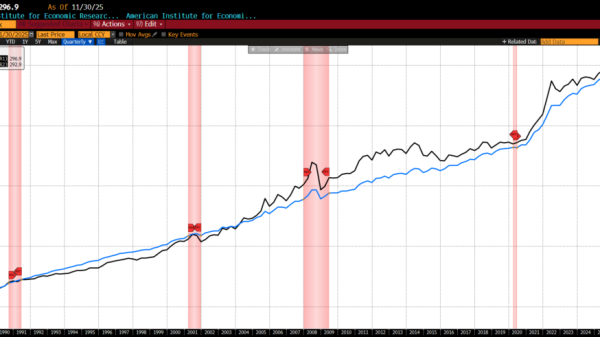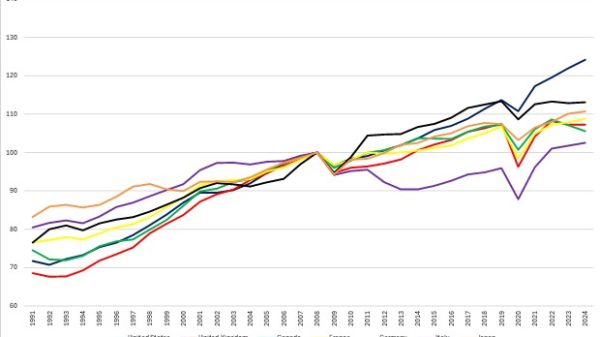In the increasingly complex debate surrounding central bank digital currencies (CBDCs), stablecoins, and the regulatory perimeter of the dollar system, few recent proposals are as quietly consequential as the GENIUS Act — formally, the “Guaranteed Electronic Notes Issuance Under Supervision” Act — which proposes to grant federally chartered banks exclusive authority to issue stablecoins fully backed by dollar reserves. Having passed the Senate in May 2025 with bipartisan support (66-32, with 16 Democrats joining the Republican majority), the bill now awaits House approval before proceeding to President Trump for signature.
While the legislation was marketed primarily as a prudential framework for ensuring the safety of privately issued stablecoins, it may, inadvertently or by subtle design, create an opening for the emergence of a de facto retail CBDC system — one implemented not by the Federal Reserve, but by the commercial banks it closely supervises.
At its core, the GENIUS Act seeks to clarify and centralize stablecoin issuance. Under the bill, nonbank entities would be prohibited from issuing dollar-referenced stablecoins directly to retail consumers unless operating through a bank charter subject to full federal oversight, deposit insurance requirements, and strict capital standards. The political motivation behind the bill is straightforward: to ensure that any digital representation of the dollar circulating among consumers remains firmly embedded within the banking system as currently regulated, thereby reducing risks to consumers and avoiding the systemic fragilities that might arise from shadow banking-like arrangements in crypto markets.
But beneath the surface, the legislation may have broader implications for the future shape of US digital money. To understand why, one must first consider the current constitutional and statutory limitations on the Federal Reserve’s authority to issue retail digital currency. The Federal Reserve Act provides no explicit authorization for the Fed to offer digital accounts or liabilities directly to the general public. While the Fed has explored the development of wholesale CBDC frameworks for interbank settlement, any effort to launch a true retail CBDC would likely require new congressional legislation, and would almost certainly spark extensive legal and constitutional challenges concerning both privacy rights and the separation of monetary and fiscal powers.
Indeed, several bills introduced in Congress reflect these constraints. The “CBDC Anti-Surveillance State Act,” advanced by House Republicans, explicitly seeks to prevent the Federal Reserve from issuing any form of retail CBDC without clear congressional authorization. Similar legislative efforts—including the “Digital Dollar Prevention Act” and “No CBDC Act” — seek to preserve private sector primacy in consumer financial services while preventing the federal government from directly administering retail monetary accounts.
This political stalemate has, until recently, been viewed as a near-insurmountable obstacle to any full-scale CBDC deployment in the United States. But the GENIUS Act’s progress through the Senate demonstrates how an alternative path may be emerging: one in which retail digital dollar instruments functionally equivalent to a CBDC are issued, operated, and distributed by private banks — but with full federal supervision, dollar backing, and interoperability standards imposed by regulators. In effect, the GENIUS framework would delegate the issuance of digital liabilities functionally indistinguishable from a CBDC to the regulated banking sector, thus achieving many of the operational objectives of a retail CBDC without requiring the Fed to directly issue or manage public accounts.
From a technical perspective, stablecoins issued under the GENIUS Act would carry several of the defining features of a retail CBDC: instant settlement, programmability, tokenized dollar representation, and 1:1 parity with base money. The instruments could be integrated into payment systems, mobile wallets, and point-of-sale networks with minimal friction, essentially providing consumers with a CBDC-like experience, but mediated through their existing banking relationships rather than a central, government-proximate authority.
Importantly, by anchoring these stablecoins within the banking system, the GENIUS Act preserves much of the institutional architecture that policymakers fear would be disrupted by a Fed-issued retail CBDC. Banks would continue to intermediate credit, manage payment flows, and hold customer deposits, while stablecoin liabilities would exist as on-balance-sheet instruments subject to conventional reserve and liquidity requirements. The Federal Reserve, in turn, would retain indirect control through its supervision of bank liquidity, capital adequacy, and systemic risk management.
From one perspective, it’s an elegant compromise: one that threads the political needle between those concerned about government surveillance and privacy, but satiates those seeking to modernize the dollar’s architecture for a digital payments era. The Senate’s bipartisan approval suggests this compromise has found resonance across party lines.
By empowering large banks to become exclusive issuers of digital dollars, the GENIUS framework may concentrate enormous market power in a small number of federally chartered institutions, reducing competition and raising barriers to entry for smaller fintech innovators. Moreover, the structure risks entrenching a bifurcated financial system in which access to cutting-edge digital payment instruments depends on bank relationships, potentially exacerbating existing inequalities in financial inclusion. Additionally, in contrast to public CBDC proposals which often aim to provide universal access to safe, central bank liabilities, the GENIUS approach would likely preserve — and perhaps amplify — the commercial bank’s role as gatekeeper to digital dollar usage.
A further complication involves potential cross-border ramifications. If stablecoins issued by US banks under the GENIUS Act achieve global usage, they may functionally export dollar-based CBDCs abroad, amplifying dollarization in emerging markets without direct Federal Reserve oversight or policy coordination. Such outcomes could trigger complex geopolitical and regulatory responses, particularly in regions where dollar liabilities already pose risks to domestic financial stability.
But most overlooked, indeed unmentioned previously, is that while the GENIUS Act would technically preserve the Federal Reserve’s prohibition on retail issuance, it may in practical terms precipitate the dissipation of the distinction between public and private monetary instruments. A fully interoperable network of bank-issued, federally overseen stablecoins may ultimately serve as a political backdoor for those seeking to advance a retail CBDC agenda by other means.
In conclusion, while the GENIUS Act was not formally designed to enable a US retail CBDC, its provisions may, intentionally or otherwise, pave the way for the private sector to fulfill many of the same functions. The bill’s successful passage through the Senate, despite ongoing debates about digital currency policy, suggests that this indirect approach to CBDC-like functionality may prove more politically viable than direct Federal Reserve issuance. In doing so, it illustrates the increasingly blurred lines between regulatory prudence, technological innovation, and monetary policy delegation. Whether this architecture proves to be a sustainable solution or a precarious halfway house remains to be seen, but with House consideration now pending, these questions may soon move from theoretical to practical. Policymakers and market participants alike would be wise to recognize that the battle over CBDC design may not be limited to public versus private issuance — but rather, how much “public” power can quietly migrate into regulated private hands.

























